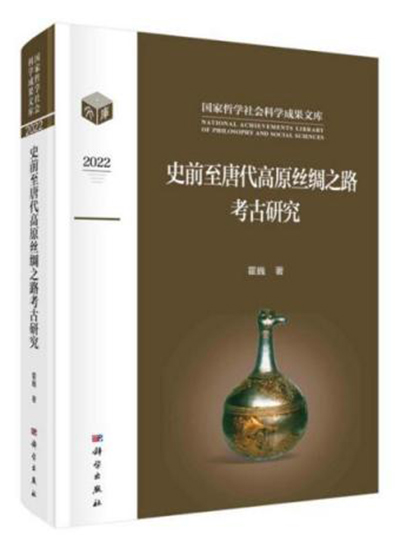‘Silk Road’ on Qinghai-Tibet Plateau

Archaeological Research on the Plateau Silk Road from Prehistory to the Tang Dynasty
In Archaeological Research on the Plateau Silk Road from Prehistory to the Tang Dynasty, Huo Wei, a professor from the School of History and Culture at Sichuan University (SCU), proposes and demonstrates the new academic concept of the Qinghai-Tibet Plateau Silk Road or the Plateau Silk Road, investigating the transportation network on the plateau in the context of Eurasian civilization.
Huo divides the plateau from prehistory to the Tang Dynasty (618–907) into the prehistoric stage and the Tubo period by dint of archaeological data and historical progress. The first section illuminates the cultural exchanges in different regions of the plateau and major transportation routes in each region during the pre-Tubo period (prehistoric period), which is considered to be the initial stage of the Plateau Silk Road. This section particularly concentrates on the cultural contacts of western Tibet and eastern Qinghai-Tibet Plateau.
Using early tombs, funerary objects, and funerary customs found in western Tibet, the author illustrates the rich and diverse culture of the western plateau during this period by revealing cultural factors from the surrounding regions including the northern steppe nomadic region, the Xinjiang region, the Central Plains, and South Asia. Samples of silk and tea from the Central Plains showcase that as early as the Han (202 BCE–220 CE) and Jin (266–420) dynasties, western Tibet already had access to Xinjiang in the north and Central and South Asian countries in the south.
The second sector elaborates upon the founding of the Tubo Kingdom in the 7th century and its unification and integration of various parts of the plateau, ushering the plateau into a new stage. The Plateau Silk Road was strengthened at this stage, forming the main arteries and traffic networks of the plateau in the northwest, southwest, northeast, and southeast. These trunk lines and their associated networks not only covered the entire plateau, but also connected with the traditional Silk Road and extended outward to international channels, such as the Tubo-Nepal Ancient Road.
During this period, the Tang-Tubo Ancient Road ran through this land in an overall northeastern-southwest path, which directly linked the Central Plains with the hinterland of Tibet. Since then, it had become the “aorta” that transported the Central Plains civilization into Tibet, as well as a powerful link for the final integration of the plateau civilization into the Chinese civilization system.
The Tang-Tubo Ancient Road and the Tubo-Nepal Ancient Road together constituted a major international channel for exchanges between East Asia and South Asia, providing a new route from the Central Plains to South Asia. This route not only served as the passage for Dharma-seeking monks to journey to India, but also witnessed many envoys sent to South Asia by the Central Plains dynasties.
Li Shuai is an associate professor from the School of History and Culture at SCU.
Edited by YANG LANLAN
